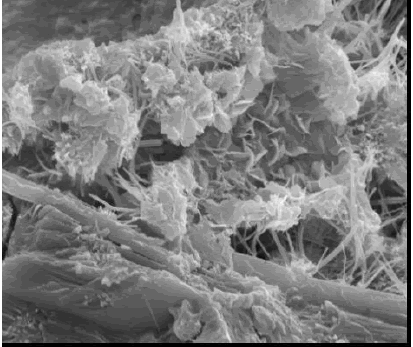Exploring Nanoscale Worlds through Scanning Electron Microscopy

Scanning Electron Microscopy (SEM) has revolutionized the way we observe and understand the nanoscale world around us. With its high-resolution imaging capabilities, SEM allows us to explore the intricate details of materials and biological samples at magnifications ranging from 10x to 100,000x. Let's delve into the fascinating realm of nanoscale exploration through the lens of SEM.
The Basics of Scanning Electron Microscopy
How SEM Works
- SEM uses a focused beam of electrons to scan the surface of a sample.
- When the electrons interact with the sample, various signals are generated.
- These signals are detected and translated into high-resolution images of the sample's surface.
Key Features of SEM
- High-resolution imaging: SEM can achieve magnifications up to 100,000x, allowing for detailed observation of nanostructures.
- 3D imaging capabilities: SEM can create 3D models of samples, providing a comprehensive view of their surface topography.
- Elemental analysis: SEM can be coupled with energy-dispersive X-ray spectroscopy (EDS) to analyze the elemental composition of samples.
Applications of SEM in Various Fields
Materials Science
- Characterization of nanoparticles: SEM is used to study the size, shape, and distribution of nanoparticles in materials.
- Surface analysis: SEM helps in analyzing surface properties such as roughness, porosity, and coating thickness.
- Failure analysis: SEM is utilized to investigate the root cause of material failures by examining microstructural defects.
Life Sciences
- Cell imaging: SEM enables high-resolution imaging of cells and tissues, providing insights into their structure and morphology.
- Nanomedicine: SEM is used in the development and characterization of nanoscale drug delivery systems.
- Biomaterials research: SEM helps in studying the interaction between biomaterials and biological systems at the nanoscale.
Environmental Science
- Particle analysis: SEM is employed to analyze airborne particles, soil contaminants, and microplastics in the environment.
- Mineralogy: SEM helps in identifying and studying mineral samples based on their crystal structure and composition.
- Pollution monitoring: SEM plays a crucial role in monitoring environmental pollution by analyzing particulate matter samples.
Advancements in SEM Technology
Correlative Microscopy
- Combining SEM with other imaging techniques such as transmission electron microscopy (TEM) and atomic force microscopy (AFM) for comprehensive sample analysis.
- Allows researchers to correlate structural, chemical, and mechanical information at the nanoscale.
In-situ Experiments
- Conducting experiments inside the SEM chamber to observe dynamic processes in real-time.
- Useful for studying phenomena like crystallization, phase transformations, and mechanical deformation.
Automated Data Analysis
- Development of advanced software for automated image processing, particle analysis, and elemental mapping.
- Increases efficiency and accuracy in data interpretation and quantification.
Future Prospects and Challenges
Integration with Artificial Intelligence
- Exploring the potential of AI algorithms for image recognition, feature identification, and classification in SEM imaging.
- AI-driven SEM systems could enhance speed and accuracy in data analysis, benefiting a wide range of scientific disciplines.
Multi-modal Imaging
- Further integration of SEM with other imaging modalities to obtain multi-dimensional information about samples.
- Combining SEM with techniques like X-ray microscopy and Raman spectroscopy for comprehensive sample characterization.
Miniaturization and Portability
- Development of miniaturized SEM systems for field applications and on-site analysis in various industries.
- Portable SEM devices could facilitate rapid sample inspection and analysis in remote locations with limited access to laboratory facilities.
In conclusion, Scanning Electron Microscopy continues to be a powerful tool for exploring the nanoscale worlds across diverse scientific disciplines. With advancements in technology and methodologies, SEM offers unprecedented insights into the complex structures and interactions at the nanoscale. As we venture further into the realm of nanoscience, SEM will undoubtedly play a pivotal role in unraveling the mysteries of the microscopic universe.